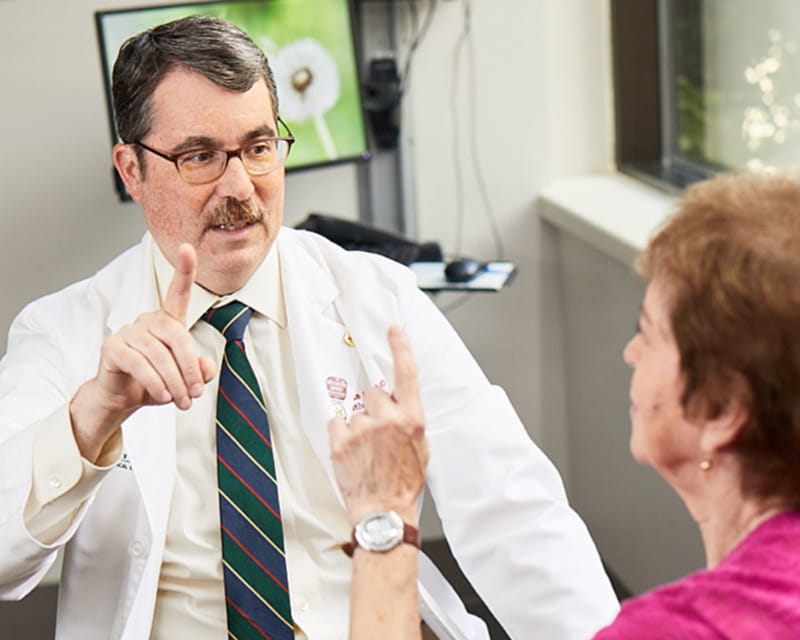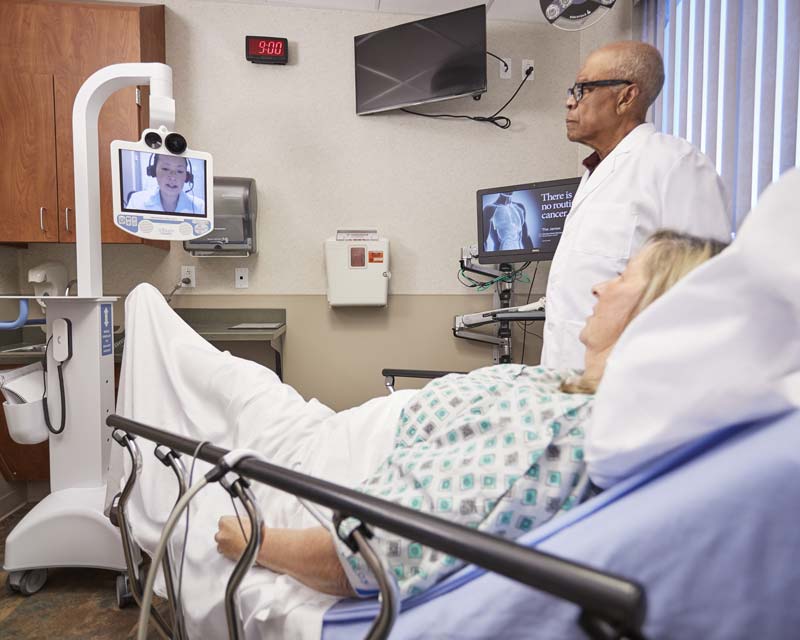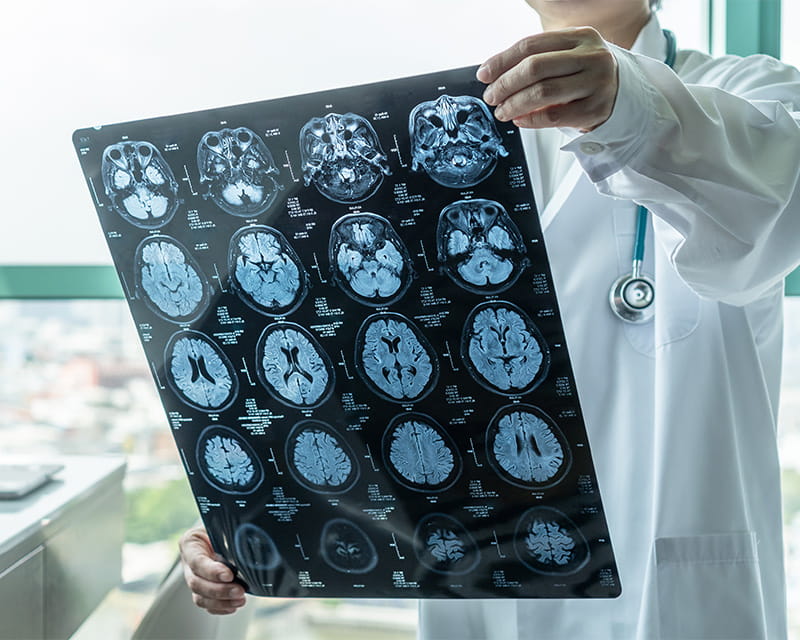
Ohio State researchers identify new biomarkers that differentiate Lewy body dementia from Alzheimer’s and Parkinson’s
 Teleneurology program augments and expands community hospital neurology care
Teleneurology program augments and expands community hospital neurology careA new telehealth program at The Ohio State University Wexner Medical Center focused on neurology care aims to improve patient outcomes at rural hospitals around the state.
Ohio State now is one of the few health systems in Ohio providing teleneurology services. Neurologist Alicia Zha, MD, joined the Ohio State Wexner Medical Center to launch and gradually grow the program.
“I want this to be a way for the community to get care from an academic health center without that being dictated by where they live,” Zha says.
The worldwide COVID-19 pandemic pushed telehealth to the forefront of patient care, and it’s now being used by physicians with positive results.
“What we are doing is augmenting care,” Zha says. “We’re filling in the gaps.”
Zha, who completed her residency at the Ohio State Wexner Medical Center in 2016, returns to the medical center after completing a fellowship in vascular neurology and several years of clinical care and research at the University of Texas (UT) Medical Center in Houston.
In Houston, Zha spent two years on stroke research followed by three years of clinical and faculty work in telehealth, teleneurology and telestroke.
UT uses inpatient teleneurology rounding at multiple community centers, and Zha says she learned much from the innovative team there. Now she’s putting that knowledge to work as she ramps up Ohio State’s teleneurology program.
“I gained a lot of hands-on experience there and can make the experience a good one for patients and community centers here in central Ohio,” Zha says.
Ohio State’s teleneurology program will build a network with rural hospitals and community neurologists. A partner hospital can call on Zha at any time for expertise.
A teleneuro consult supplements the care a hospital provides by adding the expertise of Ohio State’s neurology experts. A community hospital might call on Zha and her colleagues for more comprehensive support when a patient presents with symptoms needing neurologic evaluation, diagnosis and treatment, including strokes, seizures and vertigo.
Typically, these centers would need to transfer patients to Ohio State or other large medical centers for patients to see a neurologist. These transfers can take patients hours from their communities and families. Ohio State can now provide access to neurologic experts via telehealth after a patient is stabilized and admitted to their local hospital.
From there, Zha connects with a doctor or advanced practice provider at the local hospital via a screen wheeled into the patient’s room. Together, Zha and the on-site provider:
Training is a key element of teleneurology programs. Zha is creating a curriculum for telehealth and teleneurology training at Ohio State. She focuses on the importance of educating residents and advanced practice providers in the best ways to administer and use teleneurology. She provides simulation-based teaching for residents in acute stroke and teleneurology.
“A lot of this may seem simple, but medical students and residents train for years on developing appropriate bedside rapport, and then telehealth suddenly removes that,” Zha says. “Learning how to employ the care you already know how to provide across a medium that is not intuitive takes practice.”
Trainees learn how to apply their knowledge over the camera, and how to foster crisp, clean and accurate communication with patients and other medical teams involved in patient care.
“The more consultations you do, the quicker you are at offering acute treatment for stroke, such as thrombolysis,” Zha says. “The more hands-on experience you have during training, the better you will be at treating patients in a timely manner.”
Patients who receive care through a teleneurology program achieve comparable outcomes to patients seen in the traditional manner, Zha says.
“Every time we set up a site, we try to collect quality metrics to make sure we’re using resources appropriately, that patients are safe and outcomes are where they need to be,” Zha says.
Teleneurology provides much opportunity for improvements across the health system.
“We can help community hospitals hold onto patients and keep them close to home when appropriate,” Zha says.

Ohio State researchers identify new biomarkers that differentiate Lewy body dementia from Alzheimer’s and Parkinson’s

Biomarker breakthroughs at Ohio State transform disease diagnosis, predictability and treatment

The Ohio State University Wexner Medical Center pushes boundaries for neurological care